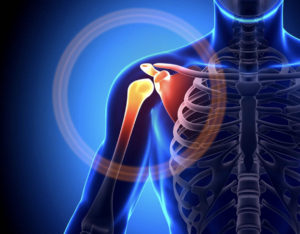CORE Physical Therapy In Omaha Explains…
By Dr. Mark Rathjen PT DPT CSCS
CORE Physical Therapy Co-owner
17660 Wright St. 9/10
Omaha NE
402-933-4027
“All treatments improved pain, shoulder mobility, function, and disability in patients with SIS. However, modified PSSEs in addition to a treatment program was superior to the treatment program alone (without PSSEs) in improving pain with activity, internal rotation ROM, and dysfunction. Moreover, stretching provided clinically significant improvements.”
Why does this matter?
This studies shows how many different types of modalities and therapies that are advantageous to patients with shoulder pain. There is NOT a one size fits all approach to rehabilitation, There is NOT a protocol to apply to every person and every shoulder. All programs are individualized.
Whats does CORE do different?
CORE in Omaha is locally owned and operated since 2015. We treat people like a part of our family, and that will show as soon as you visit. We do not use techs or assistants with our patients. You will see the same therapist every visit.
CORE Physical Therapy is a small family owned business.
CORE Physical Therapy has no investors.
CORE Physical therapy runs completely independent.
CORE Physical Therapy competes against huge companies and Hospitals.
CORE Physical Therapy has won Best of Omaha, 2016, 2017, 2018, 2019, 2020, 2021.
CORE Physical Therapy has to be better than its competition to compete.
CORE Physical Therapy is different, Come see the CORE difference.
At CORE Physical Therapy in Omaha, We specialize in the treatment of athletes. We have worked with athletes for a combined 30 years. CORE was established in 2015 by Dr. Mark and Dr. Claire Rathjen is family owned and operated.
Proud winners of the Omaha Choice awards for 2016, 2017, 2018, 2019, 2020,2021
Expertise award winners 2018, 2019, 2020, 2021
We are proud to serve the greater Omaha metro area.
For More information, Please feel free to contact us http://coreomaha.com/contact/
Please feel free to follow us at https://www.facebook.com/COREomaha/
To get started http://coreomaha.com/getting-started/
For more Blog information http://coreomaha.com/blog/
Youtube Account linked below.
https://www.youtube.com/channel/UCVg8OSN5h-i1n_ykw1Gvahg?view_as=subscriber
Effects of Modified Posterior Shoulder Stretching Exercises on Shoulder Mobility, Pain, and Dysfunction in Patients With Subacromial Impingement Syndrome
- PMID: 32017660
- PMCID: PMC7040949
- DOI: 10.1177/1941738119900532
Free PMC article
Abstract
Background: Posterior shoulder stretching exercises (PSSEs) aim to reduce posterior shoulder tightness (PST). Position modification of traditional PSSEs has been suggested to minimize inadequate control of scapular and glenohumeral rotation, possibly leading to increased subacromial impingement.
Hypothesis: Modified PSSEs will have positive effects on shoulder mobility, pain, and dysfunction.
Study design: Randomized controlled trial.
Level of evidence: Level 1.
Methods: A total of 67 symptomatic patients with subacromial impingement syndrome (SIS) and shoulder internal rotation asymmetry were randomly assigned to 3 groups: modified cross-body stretch (MCS) (n = 22; treatment program + MCS), modified sleeper stretch (MSS) (n = 22; treatment program + MSS), and a control group (n = 23; treatment program consisting of only modalities, range of motion [ROM], and strength training but no PSSEs) for 4 weeks. Pain, PST, shoulder rotation ROM, and dysfunction were evaluated.
Results: Pain, PST, shoulder rotation ROM, function, and disability improved in all groups (P < 0.05). The MCS and MSS groups had better results compared with the control group with regard to pain with activity, internal rotation ROM, function, and disability (P < 0.05). There was no significant difference between the stretching groups (P > 0.05).
Conclusion: All treatments improved pain, shoulder mobility, function, and disability in patients with SIS. However, modified PSSEs in addition to a treatment program was superior to the treatment program alone (without PSSEs) in improving pain with activity, internal rotation ROM, and dysfunction. Moreover, stretching provided clinically significant improvements.
Clinical relevance: Modified PSSEs, in addition to a treatment program, are beneficial for patients with SIS. Both modified cross-body and sleeper stretches are safe and efficacious for improving shoulder mobility, pain, and dysfunction.
Keywords: exercise; physical therapy; rehabilitation; shoulder; stretching.

